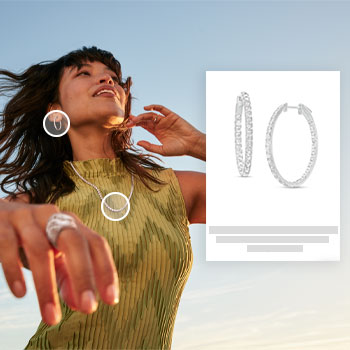Sterling Silver
Silver has been valued for centuries and at one time was considered even more valuable than gold. Today, it's the most affordable of all the precious metals.
Pure silver is too soft to be used in jewellery making, so it's mixed with copper or other metal to create sterling silver, which makes it more durable. Sterling silver must contain at least 92.5% pure silver, which is why it's stamped as .925. You can find this hallmark on the inside shank of a sterling silver ring or stamped on the back of a pendant or other item. While sterling silver is harder than pure silver, it can still be scratched fairly easily.
Sterling silver can range from bright white to grayish white, and can have a matte or shiny finish. Sterling silver can be plated with gold to change its colour.
Silver tends to tarnish, so always store your sterling silver jewellery in tarnish preventative bags and in a cool, dry place. Clean your sterling silver using mild soap and warm water and drying with a soft lint‐free cloth. Silver tarnishes, so store your sterling silver engagement ring in tarnish‐preventive bags in a cool, dry place. Tarnish can be removed by using a silver cloth.





 They will be on video but won't see you.
They will be on video but won't see you. Make sure to enable your mic if prompted.
Make sure to enable your mic if prompted. Language:
Language:
